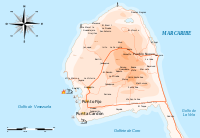
Photo from wikipedia
In order to reconstruct the vegetation history of the last 10.000 years, palynological analyses were carried out using 17 sedimentary samples of a core drilled in Parque Estadual do Rio… Click to show full abstract
In order to reconstruct the vegetation history of the last 10.000 years, palynological analyses were carried out using 17 sedimentary samples of a core drilled in Parque Estadual do Rio Doce (PERD-MG). Twenty-one species of fern spores, 52 species of pollen grains and six species of fungi were identified. Phase 1 (10.375 9.350 cal. years BP) is characterized by a low concentration and diversity of pollen grains and is thus interpreted as a fluvial system with the presence of coarse-grained sediments. Phase 2 (9.062 8.195 cal. Years BP) is interpreted as a transition from a fluvial to lacustrine environment. Phase 3 (7.905 4.785 cal years BP) is characterized by increased trend of palynomorph concentration, highlighted by a high abundance and diversity of fern spores, which are indicative of a more a humid condition. The uppermost phase, Phase 4 (4.785 50 cal. Years AP), possessed a lower abundance of herbaceous flora, which is replaced by other vegetation groups (e.g. marsh, cerrado, Atlantic Forest). The uppermost sample represents the contemporary environment (~50 years), which is characterized as seasonally-flooded.
Journal Title: Acta Botanica Brasilica
Year Published: 2019
Link to full text (if available)
Share on Social Media: Sign Up to like & get
recommendations!